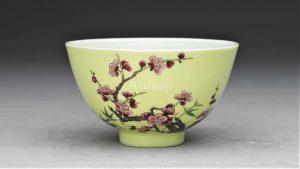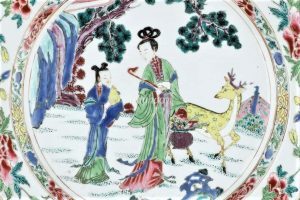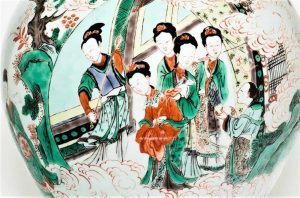Blogs
Interesting findings & case studies on commonly misunderstood and mystery images
The ninth day of the ninth month is a special day in the Chinese lunisolar calendar. According to the Classic of Changes (易经 Yi Jing), ‘nine’ is a Yang number, and the ‘Double Ninth Day’ is considered auspicious and should be celebrated as a ‘Double Yang Festival’.
The Chinese Valentine’s Day, Qixi Festival (七夕节), is just around the corner. It falls on the seventh day of the seventh month of the traditional Chinese year. Dr Yibin Ni has conducted comprehensive research on this topic and has written an article in Chinese 《牛郎织女银河隔 七夕相会胜无数》 with reference to numerous ancient artifacts that depict such romantic story scene.
This is Dr Yibin Ni’s blog article regarding the ‘Three Saints of the West’: Amitabha (Pure Land Buddhism), Avalokiteśvara and Mahāsthāmaprāpta, from antique appreciation point of view.
Hongwu porcelain with underglaze blue and underglaze red decoration has been the treasure from the beginning of Ming Dynasty which was established by Emperor Taizu Zhu Yuanzhang.
Have you ever wondered why the image of the prunus has been a popular motif in Chinese decorative art? Why do Chinese literati love to write poems about plum blossoms and paint them in their art works? Dr Yibin Ni will explain to you the symbolic meanings of the prunus and how scholar-artists started to relate themselves to the prunus from the Song dynasty onward.
2022 is the year of Tiger according to Chinese lunar calendar. Dr Yibin Ni has conducted a research overview of the pictorial representation of the tiger in the background of Chinese culture and history, from the origin of its motif in relics to various artistic forms in traditional decorative arts over the past three thousand years.
‘福 fu’, a Chinese character bearing an auspicious meaning of ‘good fortune’, has been used often in Chinese decorative arts. Dr Yibin Ni will tell you some interesting stories related to this character and how the intended meaning is represented in various art forms.
Chinese people deeply respect the elderly and traditionally consider a long existence to be one of the most important blessings in a person’s life. Here are many examples of how artists have combined a variety of longevity symbols to reinforce the potency of this concept.
In Chinese culture, the Mid-Autumn Moon Festival is related to the legendary fairy Chang E, the Moon Goddess. We often see a hare, her loyal companion, and an osmanthus tree in the picture with her against a background of the Moon Palace. However, why does Chang E often hold an osmanthus sprig, and what does she have to do with scholars attending civil-service examinations? Let’s invite Dr Yibin Ni to explain to you with his interesting literary research findings.
On the seventh day of the seventh month of the lunar Chinese year, young men and women will celebrate their traditional ‘Valentine’s Day’, Qixi Festival (七夕节). The custom can be traced back to an ancient story.
CATEGORIES
RECENT POSTS
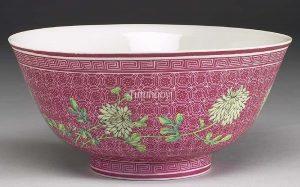 October 03, 2022The ‘Double Yang Day’ in Chinese Traditional Festivals
October 03, 2022The ‘Double Yang Day’ in Chinese Traditional Festivals July 20, 2022Pictorial Presentations of the Story of Cowherd and the Weav ...
July 20, 2022Pictorial Presentations of the Story of Cowherd and the Weav ... June 25, 2022Pictorial Presentation of Amitabha and the Two Assistant Bod ...
June 25, 2022Pictorial Presentation of Amitabha and the Two Assistant Bod ... May 16, 2022Hongwu Porcelain – The Treasure in Ming Dynasty Founded by Z ...
May 16, 2022Hongwu Porcelain – The Treasure in Ming Dynasty Founded by Z ...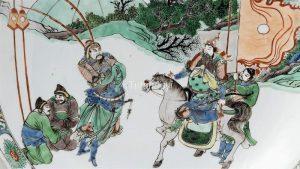 April 09, 2022How did Guo Ziyi deter the colossal enemy army without fight ...
April 09, 2022How did Guo Ziyi deter the colossal enemy army without fight ...
Archives
- October 2022
- July 2022
- June 2022
- May 2022
- April 2022
- March 2022
- February 2022
- January 2022
- December 2021
- November 2021
- October 2021
- September 2021
- August 2021
- July 2021
- June 2021
- May 2021
- April 2021
- March 2021
- February 2021
- January 2021
- December 2020
- November 2020
- October 2020
- September 2020
- August 2020
- July 2020
- June 2020
- May 2020
- April 2020
